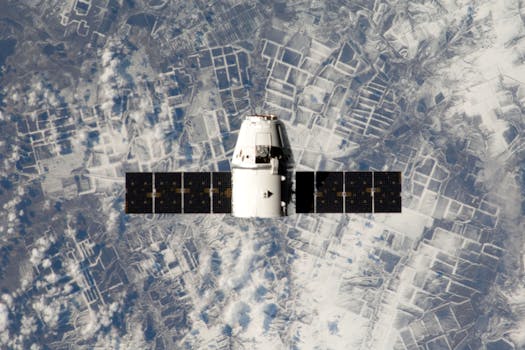The Future of Satellites: Revolutionizing Global Connectivity
The future of satellites is poised to revolutionize global connectivity, enabling faster and more reliable communication services. With advancements in space technology, satellites are becoming increasingly important for various industries, including telecommunications, navigation, and weather forecasting.

The Future of Satellites: Revolutionizing Global Connectivity
The future of satellites is poised to revolutionize global connectivity, enabling faster and more reliable communication services. With advancements in space technology, satellites are becoming increasingly important for various industries, including telecommunications, navigation, and weather forecasting. In this article, we will explore the latest developments in satellite technology and their potential impact on global connectivity.
Advancements in Satellite Technology
In recent years, there have been significant advancements in satellite technology, including the development of smaller, more efficient satellites, and the use of advanced materials and propulsion systems. These advancements have enabled the launch of constellations of satellites, which can provide global coverage and enable a wide range of services, including broadband internet, navigation, and Earth observation.
One of the key drivers of the satellite industry is the growing demand for global connectivity. With the increasing use of mobile devices and the Internet of Things (IoT), there is a need for faster and more reliable communication services. Satellites are well-positioned to meet this demand, as they can provide coverage in areas where traditional communication infrastructure is limited or non-existent.
Applications of Satellites
Satellites have a wide range of applications, including telecommunications, navigation, weather forecasting, and Earth observation. In the telecommunications sector, satellites are used to provide broadband internet services, as well as voice and data communications. Navigation satellites, such as GPS, are used to provide location information and timing signals, which are essential for a wide range of applications, including aviation, maritime, and land transportation.
Weather forecasting satellites are used to monitor weather patterns and provide early warnings of severe weather events. Earth observation satellites are used to monitor the environment, track climate change, and provide data for disaster response and recovery. With the increasing use of satellites, we can expect to see new and innovative applications in the future, such as satellite-based sensing and monitoring of the environment.
Challenges and Opportunities
Despite the many opportunities presented by satellites, there are also challenges that need to be addressed. One of the key challenges is the risk of congestion in Earth’s orbit, as the number of satellites increases. This can lead to collisions and interference, which can have significant consequences for the integrity of satellite services.
Another challenge is the need for sustainable and responsible practices in the satellite industry. This includes the development of guidelines and regulations for the use of satellites, as well as the implementation of measures to reduce the environmental impact of satellite launches and operations. With the increasing use of satellites, it is essential that we prioritize sustainability and responsibility, to ensure that the benefits of satellite technology are realized for future generations.
Conclusion
In conclusion, the future of satellites is exciting and full of opportunities. With advancements in space technology, satellites are becoming increasingly important for various industries, including telecommunications, navigation, and weather forecasting. As the demand for global connectivity continues to grow, satellites are well-positioned to meet this demand, providing faster and more reliable communication services. However, it is essential that we address the challenges presented by satellites, including the risk of congestion and the need for sustainable and responsible practices.




